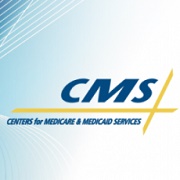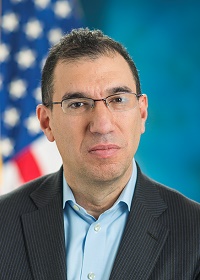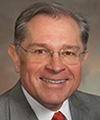CMS, AMA Delve into Past and Future of Healthcare Market
“2015 was a meaningful year for execution on a number of fronts from committing publicly to change how we pay for care to leading the largest data transparency initiative in healthcare releasing tens of millions of lines of data."

- Yesterday, representatives from the Centers for Medicare & Medicaid Services (CMS) and the American Medical Association came together to provide an overview of the current healthcare market in a presentation called “A Discussion with CMS & AMA on the Evolving Healthcare Market” at the J.P. Morgan’s Healthcare Conference.

The two main speakers will include Andy Slavitt, the Acting Administrator of CMS, and James L. Madara, M.D., the CEO and Executive Vice President of the American Medical Association.
CMS Acting Administrator Andy Slavitt
“We’re working on an incredible amount of change across the healthcare sector,” Andy Slavitt began. “When they put a private sector guy like me in charge of CMS and made clear my intention was to talk regularly to the healthcare investor community, from my not so distant past, I remember how CMS often felt opaque to me and I probably said more than once how helpful it would be to know the CMS’ agenda rather than trying to divine it by poring through intricate sets of regulations.”
“I’m a believer in the maxim that it’s always 90 percent about implementation and, possibly to the annoyance of my colleagues, it’s a constant refrain for me,” Slavitt continued. “We only succeed if we bring in the ideas behind big legislation successfully to the kitchen table of the American family in the exam room of their physicians. I’m blessed to be here at CMS now because, in many ways, the day-to-day work at CMS is to start up new consumer and provider-facing capabilities and then scale, nurture them, and mature them.”
“It demands that we change our culture and execute with clarity, with discipline, and with collaboration – these are the things that we haven’t always been known for,” Slavitt told the conference attendants.
 “2015 was a meaningful year for execution on a number of fronts from committing publicly to change how we pay for care to leading the largest data transparency initiative in healthcare releasing tens of millions of lines of data and new consumer websites, to investing in the growth of Medicare Advantage, to seeing record levels of quality, safety, and continued low medical trend, to implementing the ICD-10 changeover – the biggest event nobody heard about, and, of course, expanding Medicaid into three new states.”
“2015 was a meaningful year for execution on a number of fronts from committing publicly to change how we pay for care to leading the largest data transparency initiative in healthcare releasing tens of millions of lines of data and new consumer websites, to investing in the growth of Medicare Advantage, to seeing record levels of quality, safety, and continued low medical trend, to implementing the ICD-10 changeover – the biggest event nobody heard about, and, of course, expanding Medicaid into three new states.”
“We have now crossed 17 million newly insured since the start of the ACA and who had a strong start to a third open enrollment,” Slavitt explained. “Through the year, I developed a view of how CMS operates and the new cultural focus to execute most effectively.”
“CMS works really on three important levels. First, setting policy and acting as a regulator to make sure the laws Congress passes and the rules we set advance the interests of consumers and taxpayers. Here, our most important job is to listen and learn. Policy is often a blunt instrument and, in the real world, it takes continual adjusting.”
“Second, we act as an operator, providing service to our beneficiaries, technical support to our healthcare providers, partnering with states and commercial health plans to deliver our programs. Our mantra here is to give people the tools they need to thrive in the face of significant change.”
“Third, we often operate as a market signaler, acting as a catalyst to bring together the disparate pieces of healthcare to make improvement more rapid and more efficiently, which is how we pay for care.”
AMA Executive Vice President James Madara
 James L. Madara, the Executive Vice President of the American Medical Association, also offered his views on the healthcare market at the conference.
James L. Madara, the Executive Vice President of the American Medical Association, also offered his views on the healthcare market at the conference.
“I have to say, when one thinks of the evolving healthcare market, technology, digital revolution, biomedical advances, and precision medicine are some of the things that come to mind, but we sometimes lose track that the overarching driver that will dictate the direction of innovation is the shifting nature of disease burden itself,” Madara began.
“This driver, as many of you know, has radically changed. I have to say, it’s changed in a way that’s kind of crept up on us. It’s changed from acute disease to chronic disease, but much of our healthcare structure is still tilted toward this old paradigm of acute disease.”
“The CDC estimates that more than 80 percent of our three trillion dollar annual healthcare spend is related to chronic disease. So currently, when we talk about chronic disease, we’re talking about 2.5 trillion dollars.”
“Science also indicates that we’ll probably have more and more chronic disease. We’re less good at cures than we would like to be, but not bad at taking previously acute, fatal disease and converting it to a chronic, manageable condition,” he continued.
“There are several other consequences of this shift. One important corresponding change is shift in site of care. There has been a slow, steady, progressive, proportional shift from in-patient to ambulatory. We’re now seeing a beginning of a shift from ambulatory to home driven by technology and science.”
“Given the central role that physicians play in healthcare – the centrality shown by the majority of the three trillion spend determined by physician decisions – we really need to understand, capture, and analyze the function of physicians in this system. The AMA is well-positioned to do that.”
“We have a so-called House of Delegates where all the societies are represented – all 50 state medical societies, all four branches of military medicine, and 120 specialty societies. This house provides AMA policy, which is sort of a meta-signal from all of these societies to which virtually every physician in the United States belongs.”
“These two elements – the House policy and also interacting with our mission statement, which is to promote the art and science of medicine and the betterment of public health – are the basis for our broad advocacy work in D.C. and the basis for our productive interactions with agencies and regulators.”
